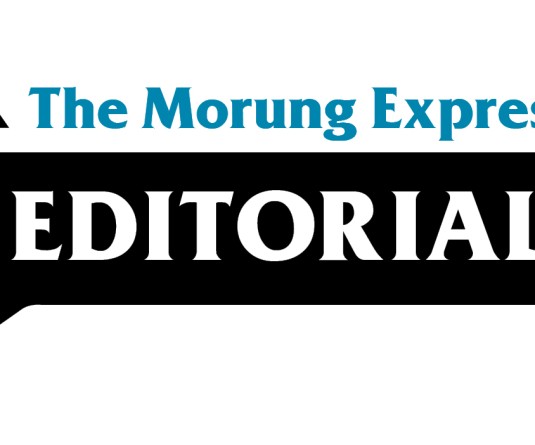
Following the tragic incident on April 22 last at Wungram Colony, Purana Bazaar Dimapur, there are lessons, both good and bad, to be learnt for the Naga people in general coming out of the frightening and ugly episode. On the upside, the moral strength demonstrated in order to forgive one another as shown by the Sumi community belonging to Purana Bazaar under the aegis of the Western Sumi Hoho and the Tangkhul community of Wungram Colony under the Tangkhul Hoho needs to be appreciated and replicated in other areas of conflict as well. And now that the unfortunate incident has been buried with honest intent by both parties, for the civil society leadership it should be a good time for quiet reflection and reasoning for the future of the Naga people.
Whether people will agree or not, the apex tribal body the Naga Hoho is not doing enough to take on the leadership mantle in times of such crisis. For whatever reason, the Naga Hoho which was to meet on April 27, five days after the tragedy, to take stock of the situation, ended up postponing a crucial meeting ‘till further notice’. Agreed the apex tribal body has valid reasons for taking the extra cautious line when it comes to the tricky issue of reconciliation of the underground groups, having burnt its finger already more than once. But the Naga Hoho cannot bury its head on the ground when other important issues have to be faced and dealt with. It has to show more resolve and strength of character if it does not want its credibility further eroding. The present leadership within the Naga Hoho will have to do some serious thinking on the direction it should go so as to uphold its legitimacy in the eyes of the Naga public both in the present and the foreseeable future.
Leave aside the more contentious issue of history and politics for now and instead the Naga Hoho must initiate a process of cultural dialogue and to tap the huge reservoir of goodwill that actually exists at the people to people level among the different tribal groups. The Naga Hoho must seriously consider some practical measures to go about this task. One suggestion is to organize an annual or bi-annual cultural get together on the lines of the Hornbill and Lui-Ngai-Ni festival observed by the Government of Nagaland and Nagas of Manipur respectively. At present, both festivals are limited by the presence of only a handful Naga tribal group. Only a full fledged festival involving all tribes can lend cultural integration to the Naga people. It is quite surprising that despite clamor for political and territorial integration, serious efforts have not been sustained to bring people together through the common denominator of culture. This has to change and the Naga Hoho if it wants to remain relevant to the situation will have to step in and correct this divide.
The rich cultural heritage is no doubt the comparative advantage as far as Nagas are concerned. An all out effort must be made to facilitate the congregation of the different tribal communities in celebrating the common cultural heritage of the Nagas. A common festival can also be used to build bridges of understanding and to generate a feeling of brotherhood. It can also be a rare time to interact and share stories of common struggle and aspirations. The unifying force as manifested during festivals such as the hornbill and Lui-Ngai-Ni goes to show that there is a strong desire for unity at the people to people level.
The very significance of such festivals should be seen in the fact that a cultural link binds the common destiny of the people. Leaving aside ideological rhetoric and the divisive political agenda, a common festival can be used a forum for cultural diplomacy as the first step towards resolving political differences that exists. Non political activities such as cultural exchange programs can also be taken up by the Naga Hoho. The unifying force manifested through culture presents a small window of hope for the Naga people. This is both an opportunity and a challenge.





